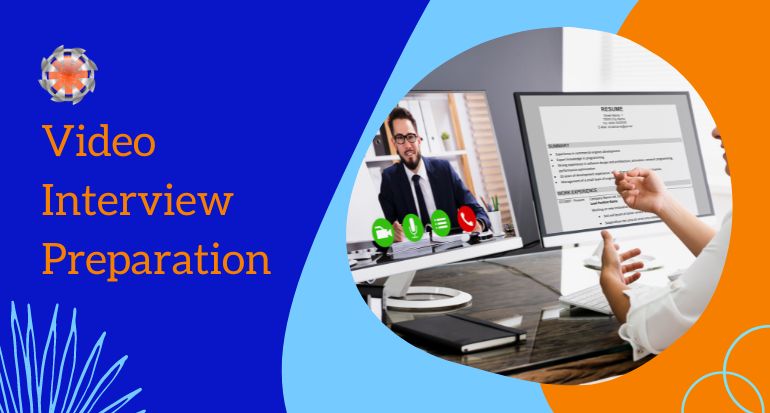Tips for Success in Your Video Interview
In the wake of the COVID-19 pandemic, video interviews have become a staple in the hiring process. A video interview allows potential employers to evaluate candidates remotely, saving both parties time and resources. But it also introduces a new set of challenges and considerations. Here’s how you can prepare and put your best foot forward:
Before the Interview:
- Set Up Your Space: Find a quiet, well-lit area for the interview. Ideally, this will be a spot where you have control over noise and interruptions. Ensure the light is in front of you to avoid appearing as a silhouette. The camera should be at eye level to provide a flattering angle.
- Test Your Equipment: Check your webcam and microphone to ensure they are functioning properly. If possible, do a test run with a friend or family member. Also, ensure your internet connection is stable to avoid any hiccups during the interview.
During the Interview:
- Read Instructions Carefully: If you’re using new software for the interview, make sure you understand how to use it to avoid technical hiccups. For example, learn how to mute and unmute your microphone, turn your video on and off, and share your screen if needed. Knowing these basic functionalities will help you avoid fumbling with controls during the interview.
- Speak Clearly and Maintain Eye Contact: Make sure to articulate your words and speak at a comfortable volume. Try to maintain eye contact as much as possible to show engagement.
- Maintain Professionalism: While video interviews offer the comfort of being at home, it’s crucial to treat them as seriously as in-person interviews. Watch your posture, smile often, and demonstrate professionalism.
- Be Prepared: Preparation for a video interview is just as important as for an in-person interview. Rehearse your responses, research the company, and have your resume and any notes handy.
Dress Appropriately:
Wear an outfit that you feel confident in. Dark colors, such as navy, can appear better on camera than bright colors or patterns. Pay attention to your hair and makeup as well.
After the Interview:
- Ask About Next Steps: It’s appropriate to ask about what to expect in terms of next steps in the hiring process.
- Thank the Interviewers: Send a “thank you” email after the interview expressing your gratitude for the opportunity and your continued interest in the role.
- Debrief with Your Recruiter: Contact your recruiter after the interview to discuss how it went and any follow-up actions required.
Remember, practice makes perfect. With some preparation, you’ll become comfortable with video interviews and will be able to showcase your skills and personality effectively.
Now it’s your turn: Have you ever had a video interview go wrong? What happened and how did you handle the situation?
Anjela Mangrum, the founder of Mangrum Career Solutions, is a trusted authority in executive recruitment for the manufacturing industry! She’s dedicated to matching top-tier candidates with rewarding opportunities in the field. Connect with her on LinkedIn and join the MCS LinkedIn group for the latest in manufacturing recruitment news and trends. Let’s partner in your hiring success!


